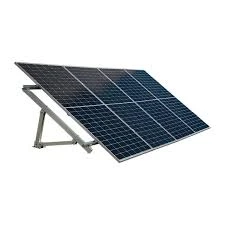average cost of solar panels
The Average Cost of Solar Panels What You Need to Know
As the world increasingly shifts towards sustainable energy sources, the adoption of solar panels has surged. Homeowners and businesses alike are considering solar energy not only for its environmental benefits but also for its long-term financial savings. However, one of the most critical factors that influence the decision to install solar panels is their cost. In this article, we will explore the average cost of solar panels, the factors that affect pricing, and the potential savings they can bring.
As of 2023, the average cost of solar panels in the United States ranges from $15,000 to $25,000 for a typical residential installation before any tax credits or incentives. This price usually includes the cost of the solar panels themselves, inverter systems, mounting equipment, and installation labor. The cost per watt of solar panels has seen a significant decline over the past decade. In 2010, the average cost was around $7 per watt, whereas, in 2023, it has fallen to about $3 to $4 per watt, owing to advancements in technology, increased manufacturing efficiency, and greater market competition.
Several factors can affect the average cost of solar panels for an individual homeowner. One of the main factors is the type of solar panel being used. There are three primary types of solar panels monocrystalline, polycrystalline, and thin-film. Monocrystalline panels tend to be the most efficient and are typically the most expensive, while polycrystalline panels are less expensive but also slightly less efficient. Thin-film panels are generally the cheapest; however, they require more space to produce the same amount of energy.
average cost of solar panels

Geographic location is another critical determinant of solar panel costs. Installation costs can vary significantly from one region to another depending on local labor rates, incentives, and the average amount of sunlight received. For instance, states with abundant sunlight, such as California and Florida, often provide a better return on investment compared to states with less sunshine, as solar panels will generate more energy over time.
In addition to the initial costs, it is essential to consider the available incentives and financing options that can make solar energy more accessible. The federal Investment Tax Credit (ITC) allows homeowners to deduct a significant percentage of the cost of solar panel installations from their federal taxes. Many states also offer additional rebates and incentives, which can further mitigate costs. There are also various financing options, including solar loans, leases, and power purchase agreements (PPAs), that allow homeowners to install solar panels with little to no upfront cost.
Despite the initial costs, investing in solar panels can lead to significant long-term savings. Homeowners can expect to reduce their monthly electricity bills by 50% or more, and many systems pay for themselves within five to seven years. Additionally, solar panel installations can increase property values, making homes more attractive to potential buyers.
In conclusion, the average cost of solar panels has become more affordable in recent years, making solar energy an appealing option for many homeowners. While the initial investment can seem daunting, the long-term savings and environmental benefits make it a worthwhile consideration. By understanding the factors that influence solar panel costs, homeowners can make informed decisions that align with their financial goals and contribute to a more sustainable future.
-
Unlocking Energy Freedom with the Off Grid Solar InverterNewsJun.06,2025
-
Unlock More Solar Power with a High-Efficiency Bifacial Solar PanelNewsJun.06,2025
-
Power Your Future with High-Efficiency Monocrystalline Solar PanelsNewsJun.06,2025
-
Next-Gen Solar Power Starts with Micro Solar InvertersNewsJun.06,2025
-
Harnessing Peak Efficiency with the On Grid Solar InverterNewsJun.06,2025
-
Discover Unmatched Efficiency with the Latest String Solar InverterNewsJun.06,2025







